Preventing nest flooding with bamboo sap
Some tree-dwelling ants are known to use flood defences to prevent flooding of their nests. In the recent paper “Bamboo sap ejection from the nests of Tetraponera binghami (Hymenoptera: Formicidae: Pseudomyrmecinae) and the role of flood control in arboreal ants”, Damir Kovac, Rüdiger W. Klein, Hashim Rosli, and Decha Wiwatwitaya investigate how the ant T. binghami prevents its nest from being flooded by bamboo sap oozing from freshly made entry holes in the bamboo wall. In this photoblog contribution, first author Damir Kovac shares some interesting pictures of the habitat, the ants, and his observation technique.
A Photoblog contribution compiled by Damir Kovac
Edited by Billu Das, Roberta Gibson, and Patrick Krapf

Fig. 1: Landscape of northern Thailand, Mae Hong Son province, Pangmapha district, near the Lisu village of Ban Nam Rin, with rice fields and bamboo forests. Bamboo stands of Cephalostacyhum pergracile can be seen on the left and right edges of the picture. Colonies of the ant species Tetraponera binghami often inhabit the hollows in their stems.
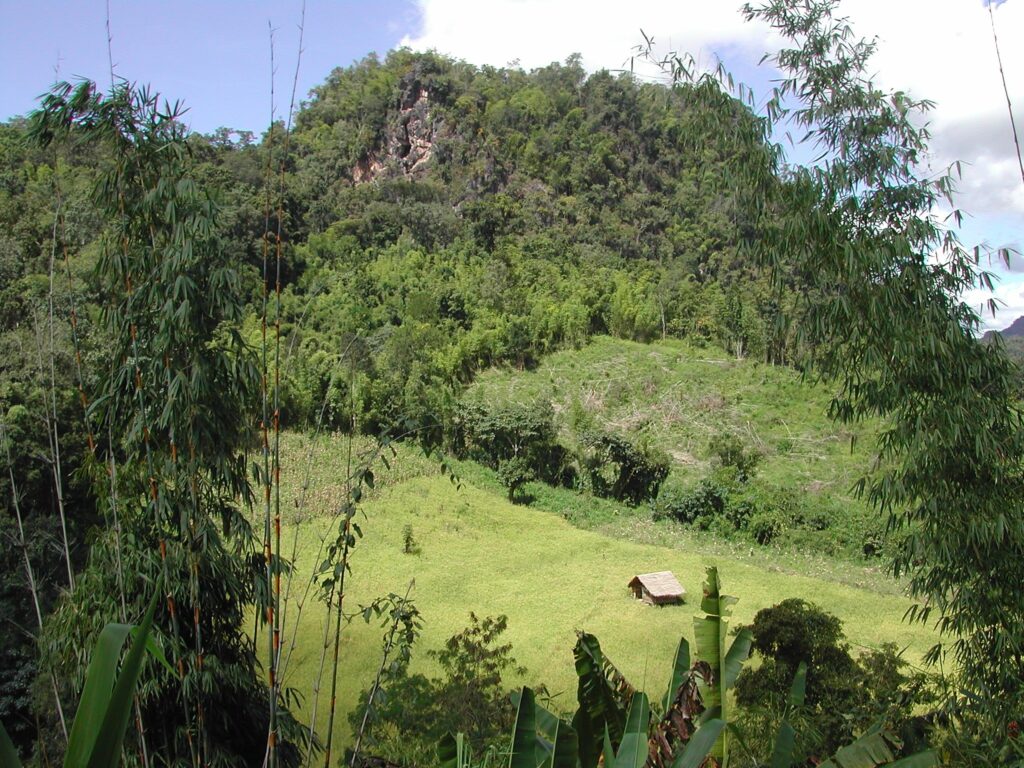
Fig. 2: The bamboo, C. pergracile,during the dry season in April. Note the culm shoot with the orange internode sheaths. The culm has reached its final length, and the sheaths are beginning to fall off, but branches and leaves are not yet present.
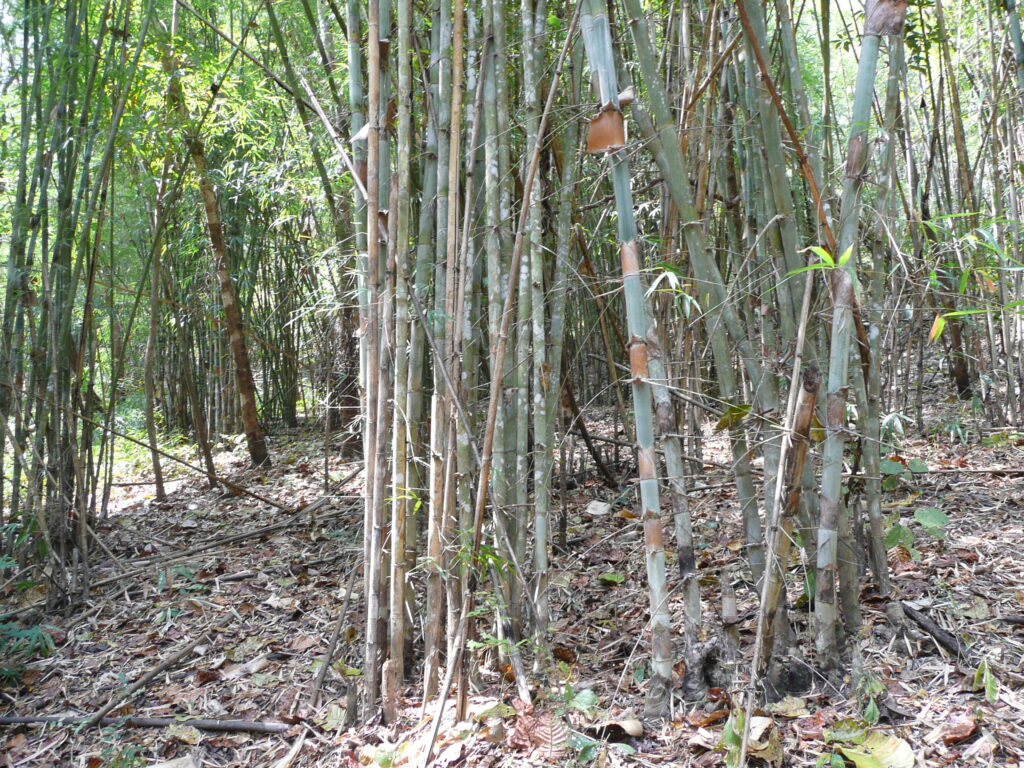
Fig. 3: The upper part of an internode of C. pergracile shows the entrance hole of a nest of T. binghami (a worker can be seen on the left). The hole was made by a larva of the leaf beetle Lasiochila gestroi. A small staphylinid beetle, Orphnebius kleini, which preys on T. binghami can be seen between the ant and the entrance hole.
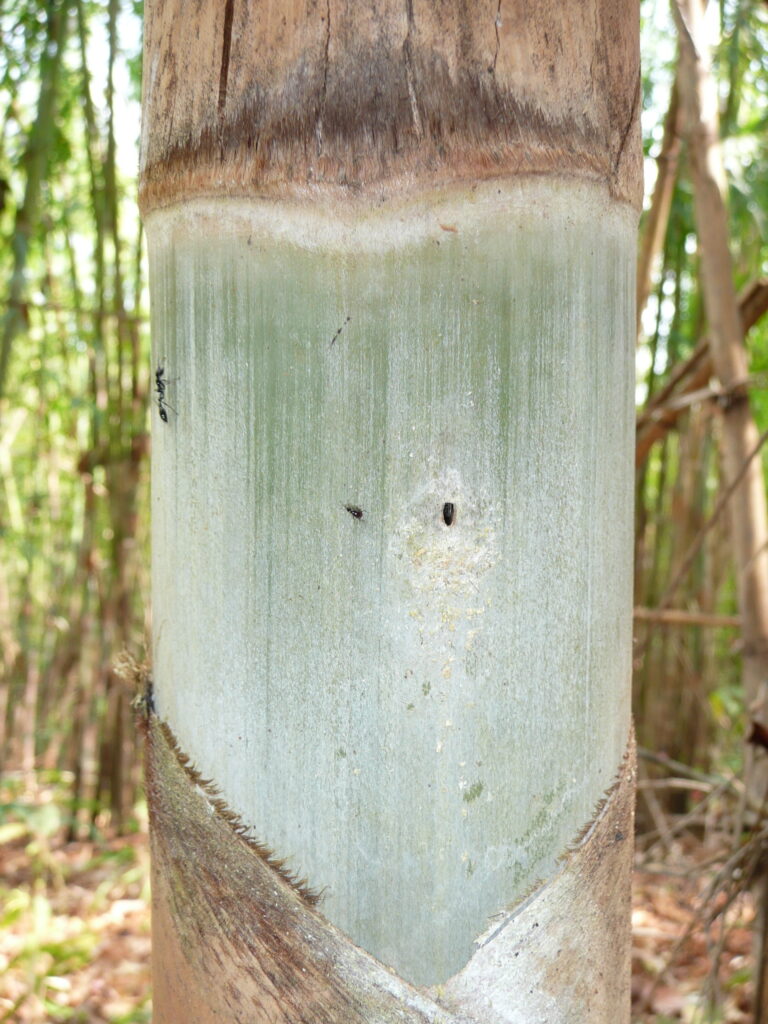
Fig. 4: T. binghami workers and brood in an internode cavity of C. pergracile.
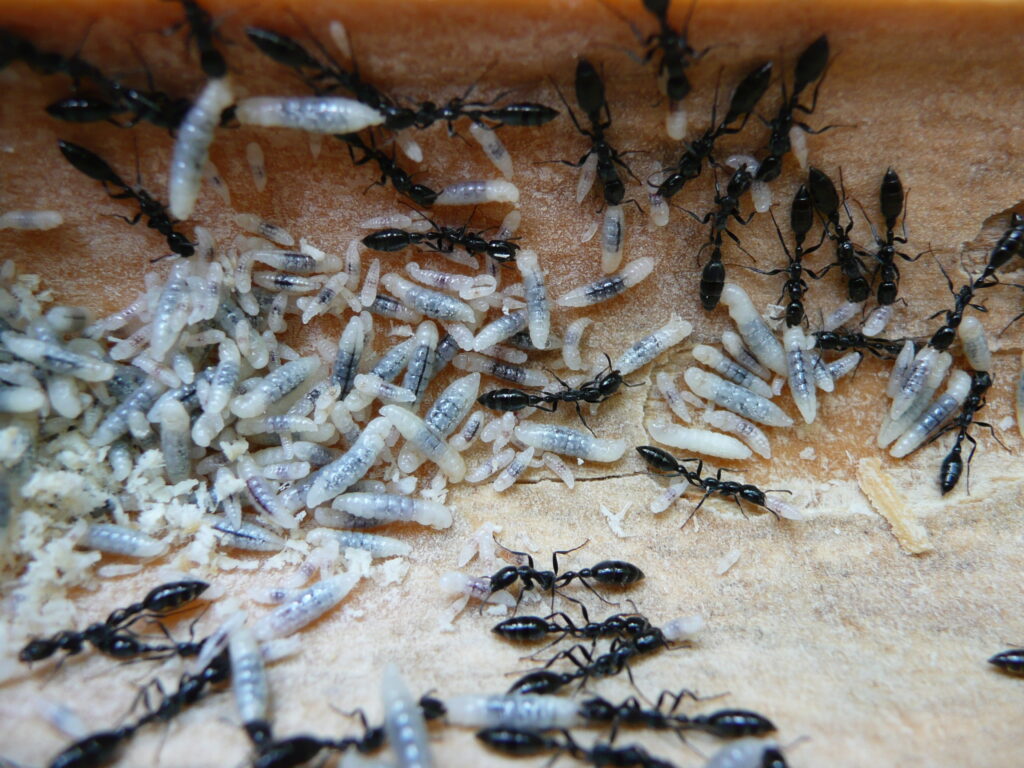
Fig. 5: View of the upper part of a T. binghami nest with workers next to mealy bugs Kermicus wroughtoni. Most mealy bugs suck phloem at the edge of the upper transverse node walls (also known as diaphragms).
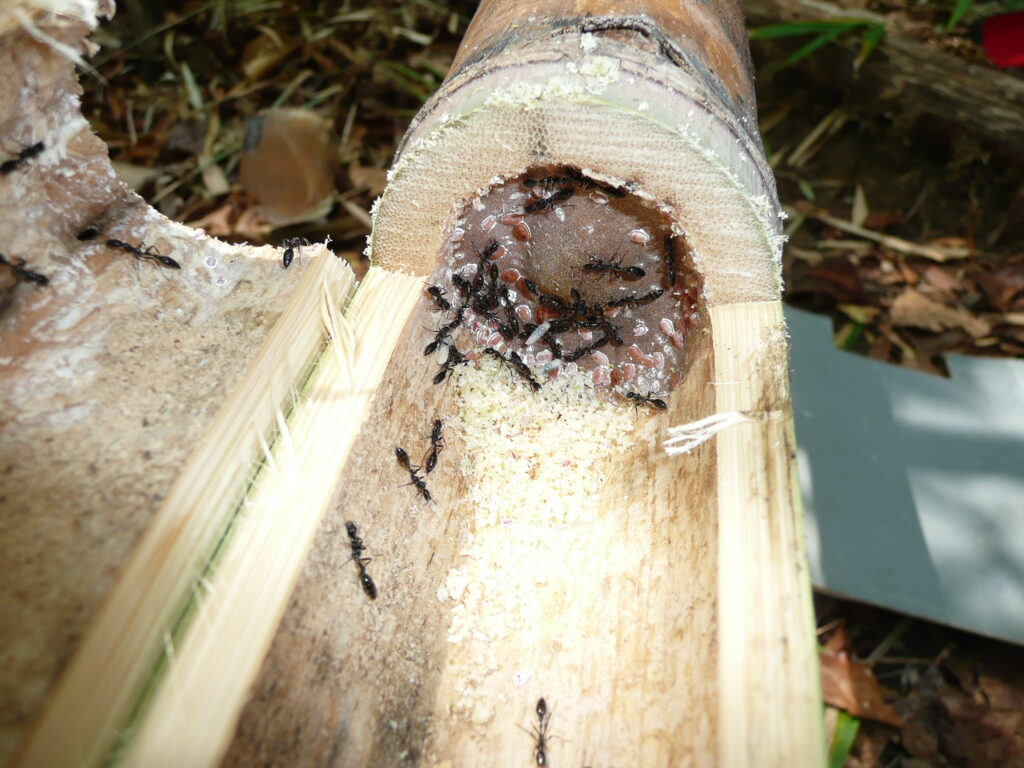
Fig. 6: Mealy bug K. wroughtoni in an internode cavity of the bamboo Gigantochloa scortechinii, West Malaysia.
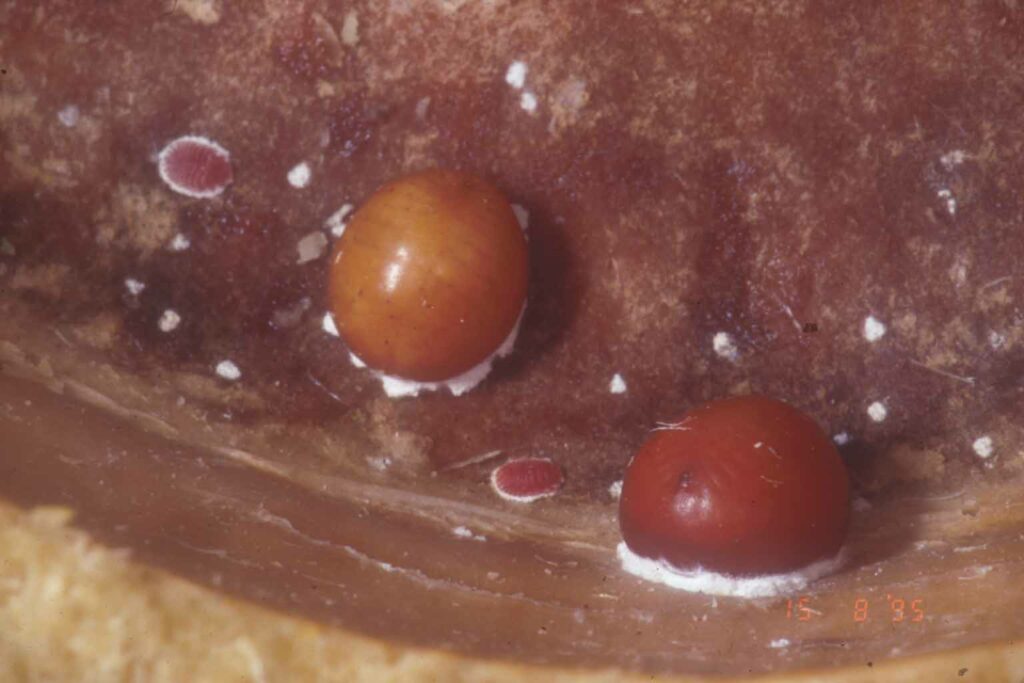
Fig. 7: T. binghami workers in an internode of C. pergracile where the ants were unable to prevent flooding. There is almost no brood. Some ants have drowned or are struggling to get out of the water.
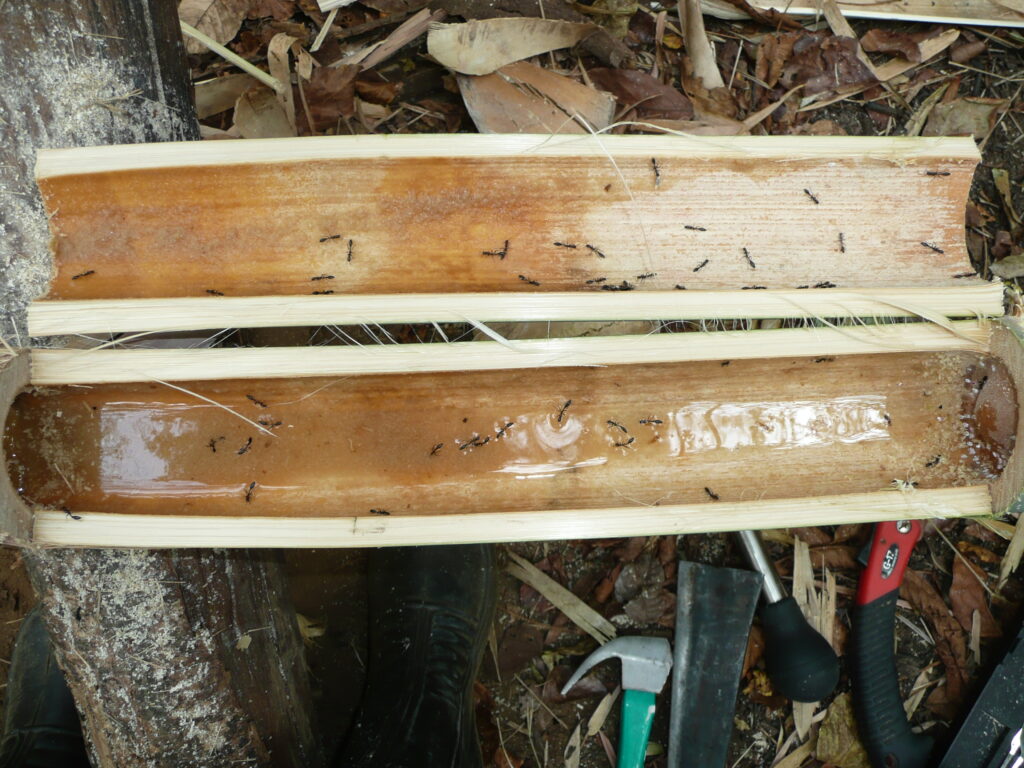
Fig. 8: A worker of T. binghami spitting out a drop of water from the entrance of the internode of a mature bamboo stem after rain.
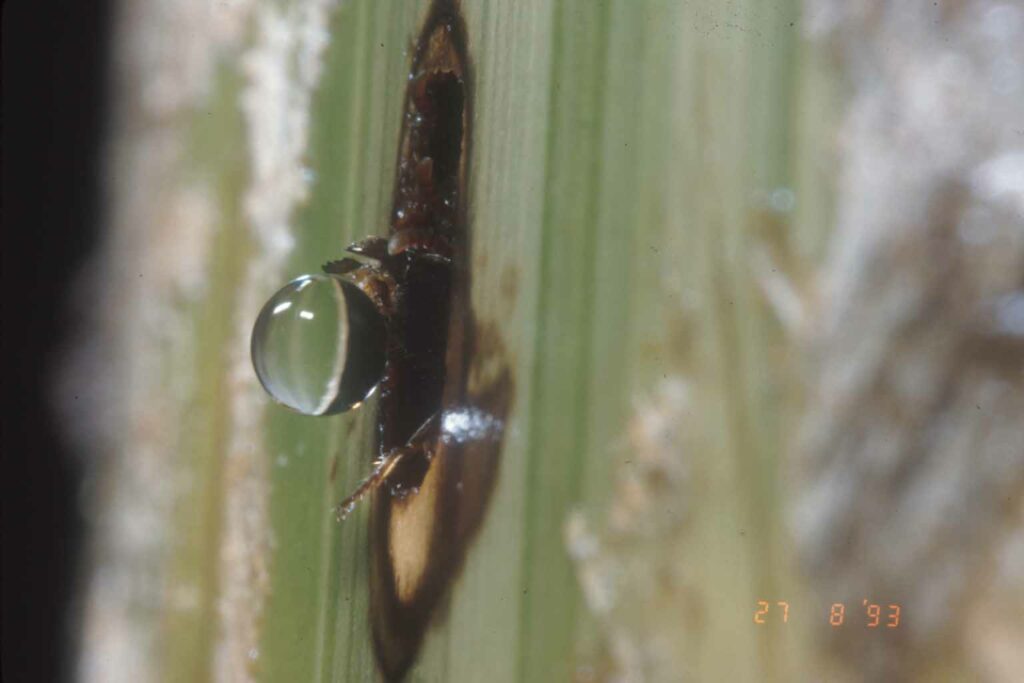

Fig. 9: Damir Kovac using an endoscope in an internode cavity of Gigantochloa scortechinii at night at the Ulu Gombak Field Studies Centre, Peninsular Malaysia.
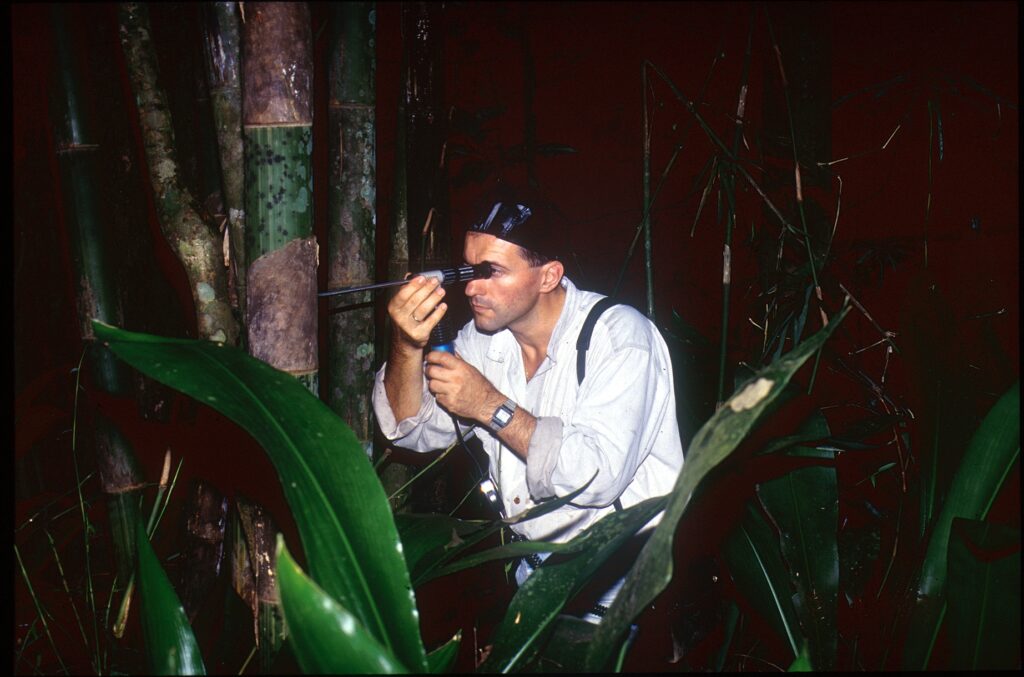
Fig. 10: Damir Kovac with a Dendrocalamus giganteus bambooshoot in northern Thailand. Although T. binghami is found in several large bamboo species of different genera, it does not colonise D. giganteus because its walls are too thick for the ants or other borers to penetrate.
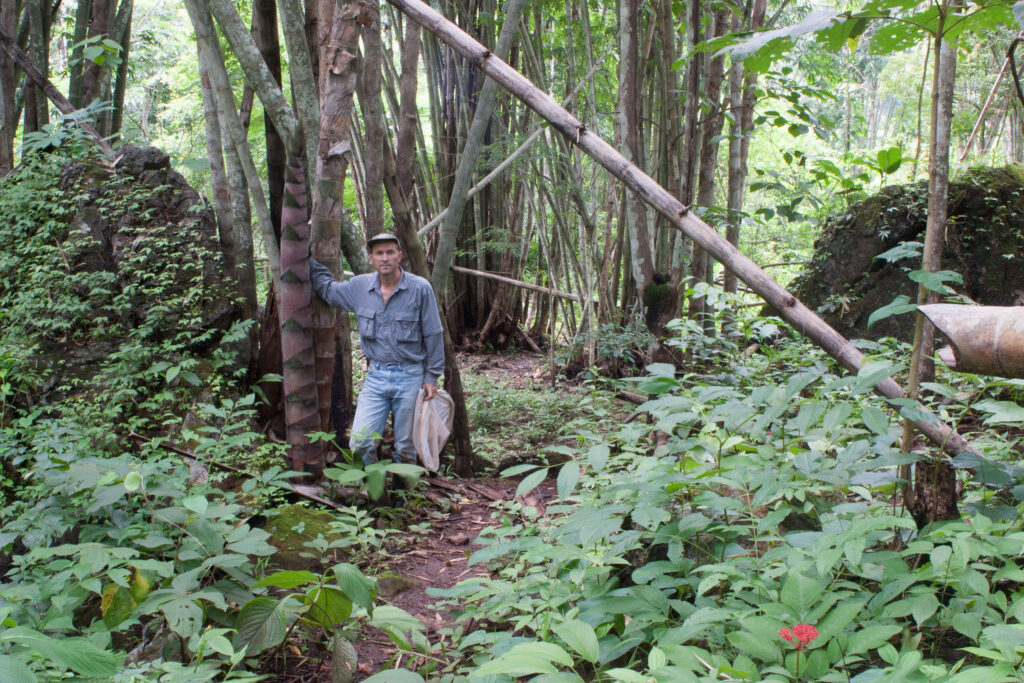
Fig. 11: Damir Kovac in northern Thailand making notes in his field book.
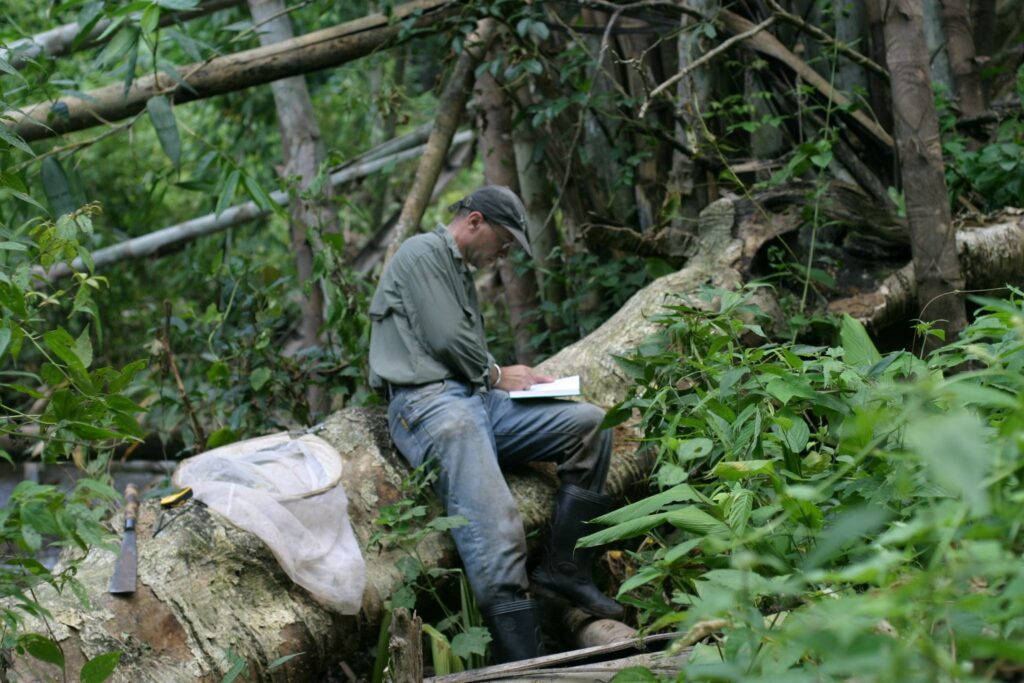


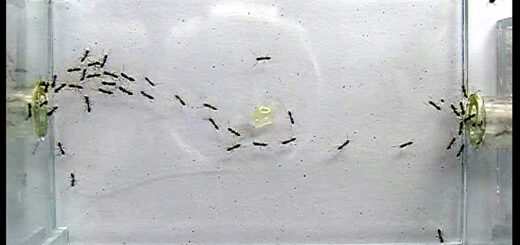
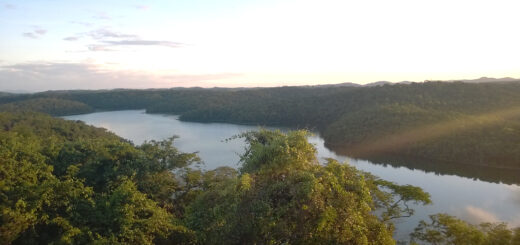
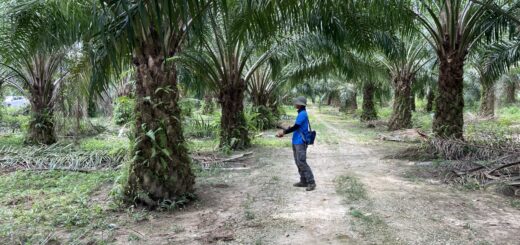
Recent Comments